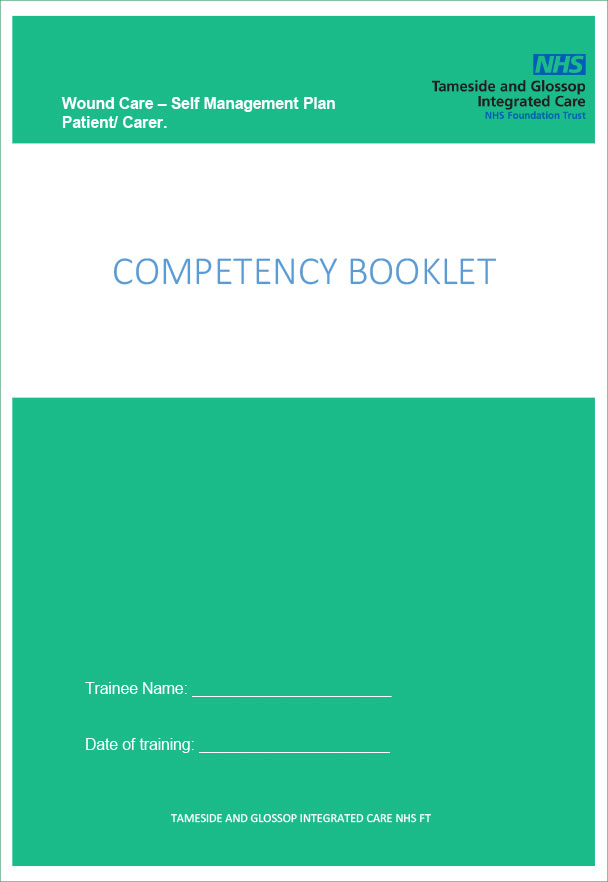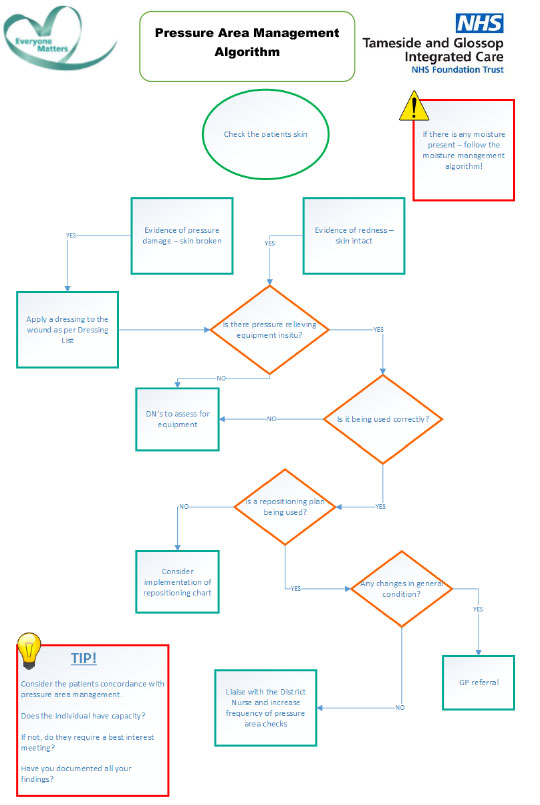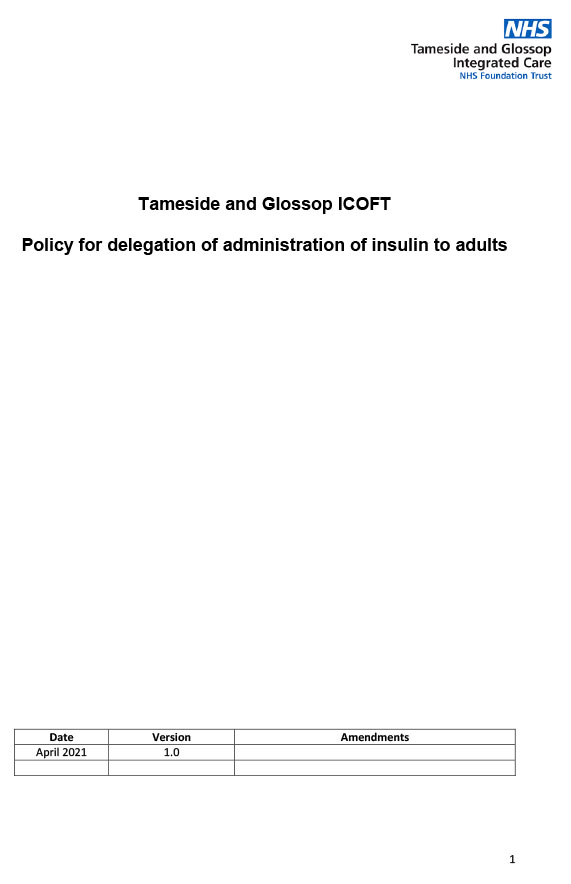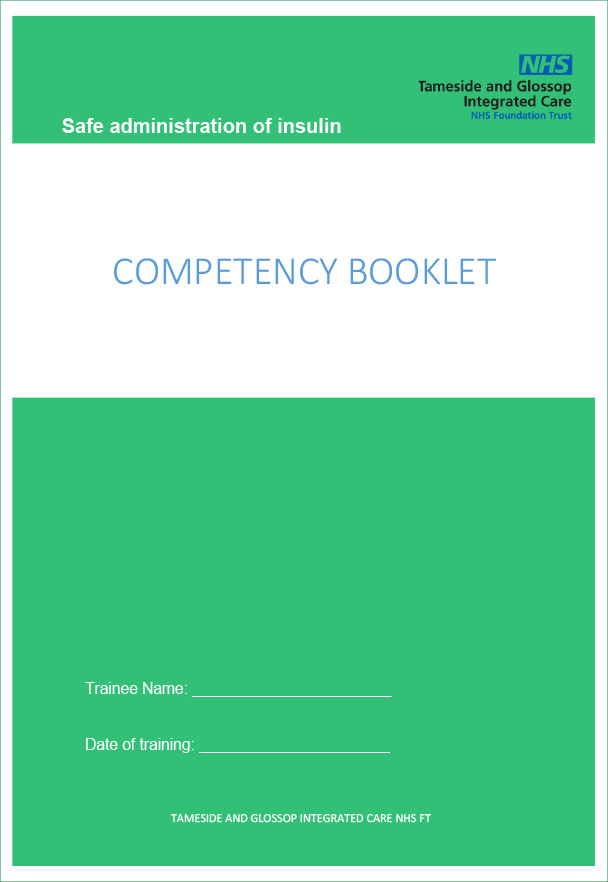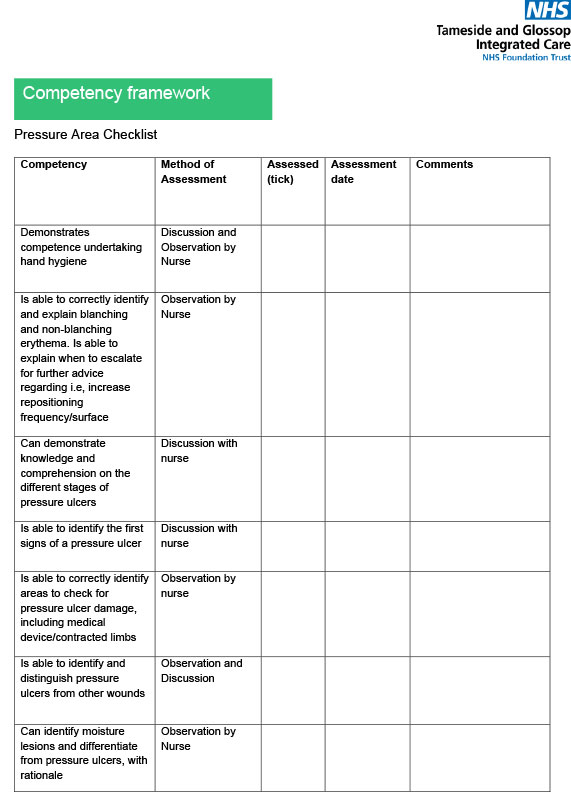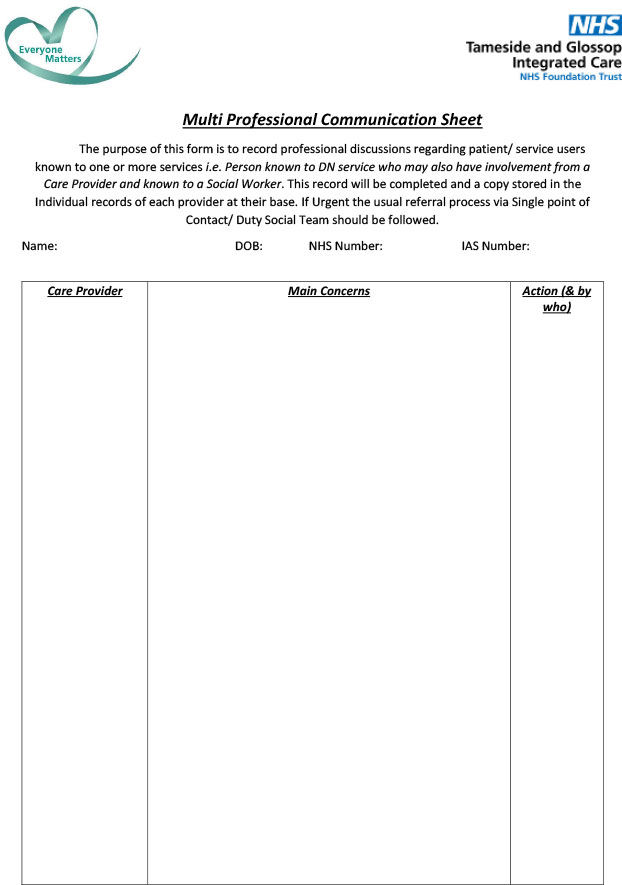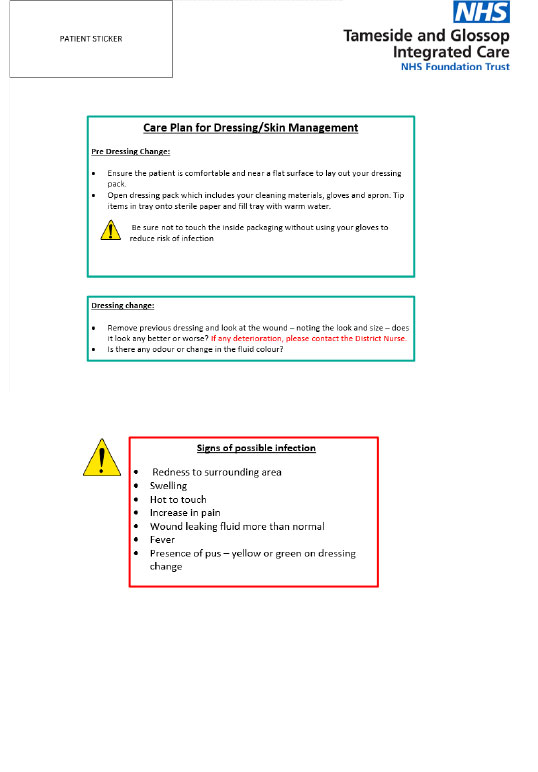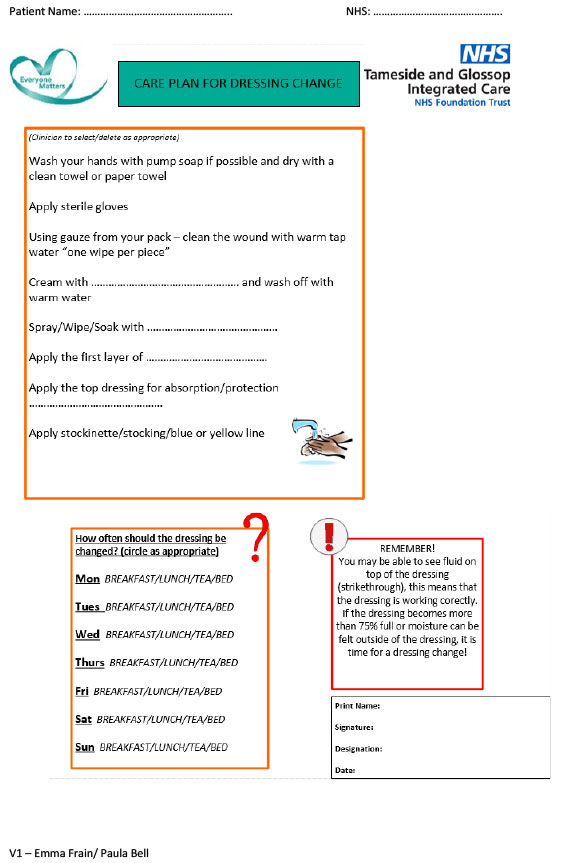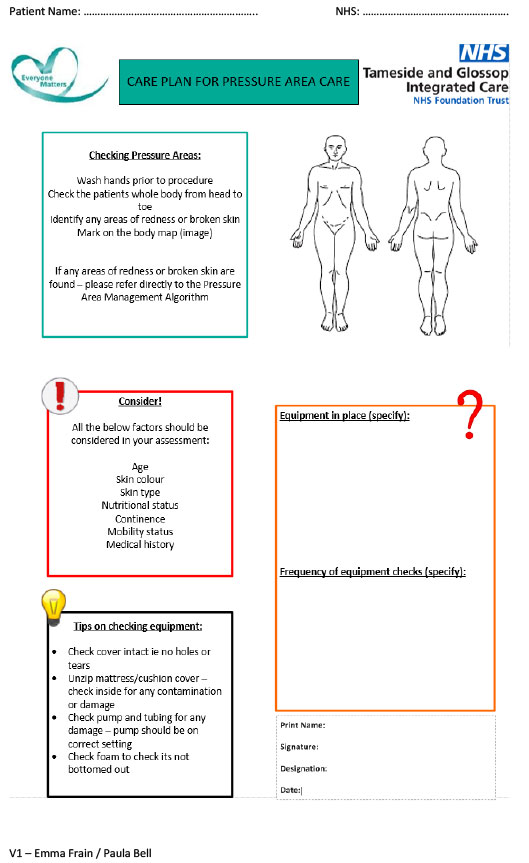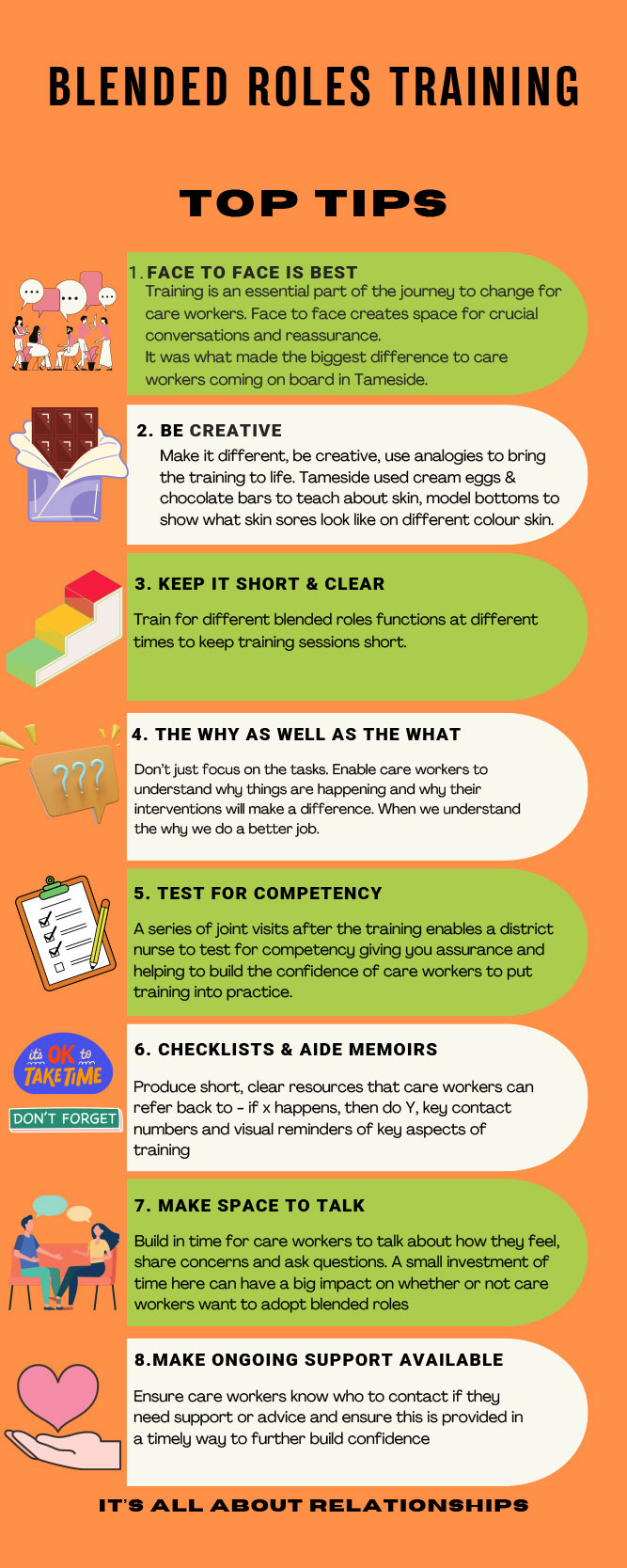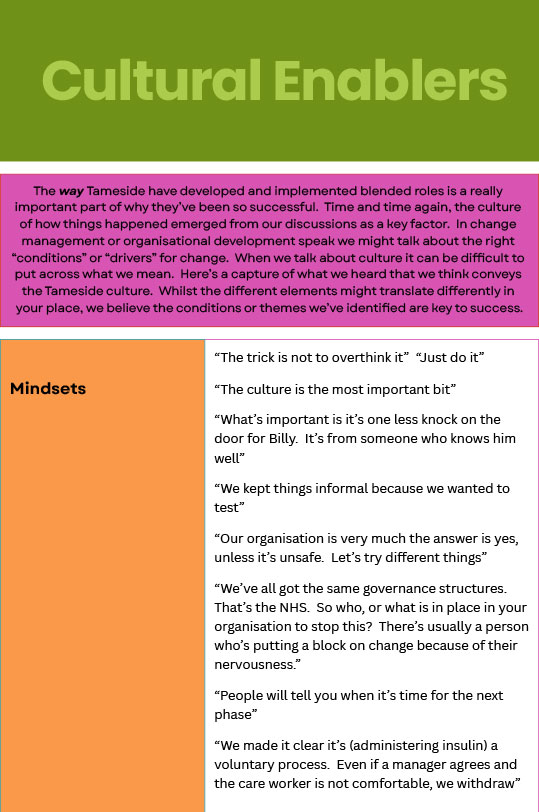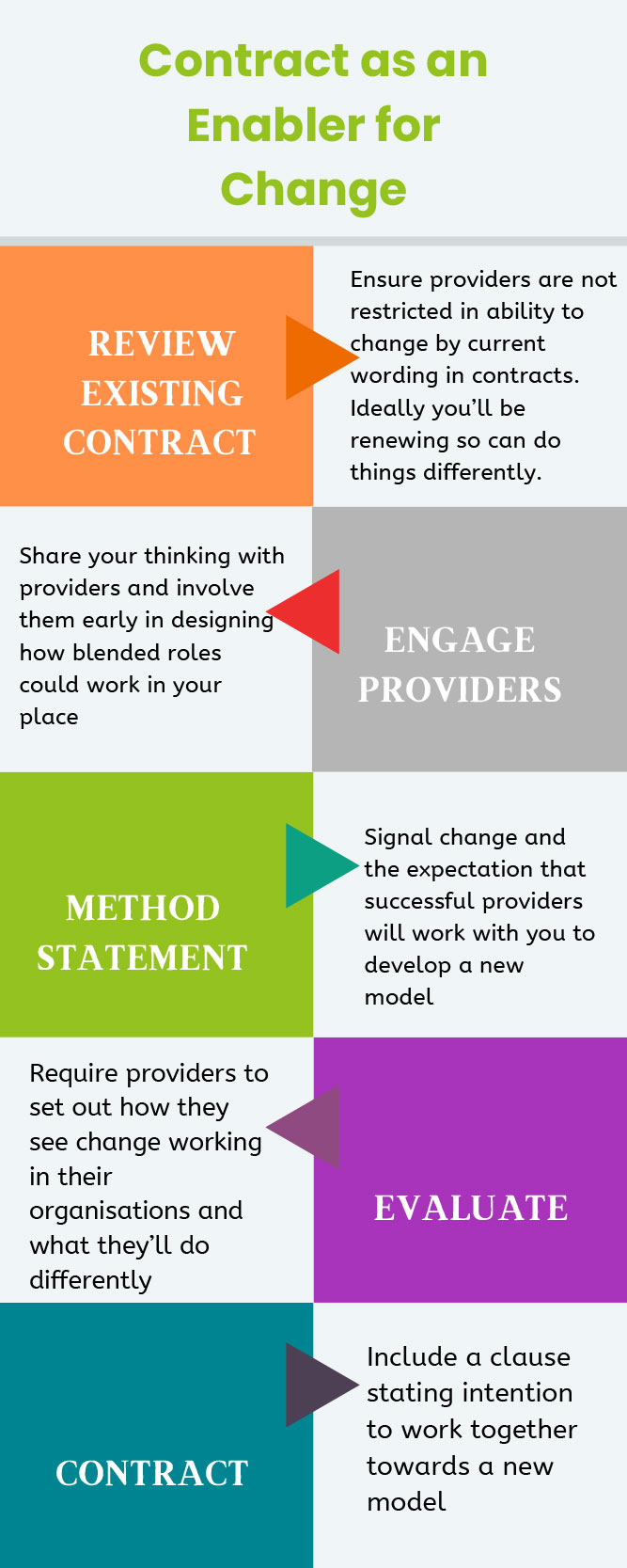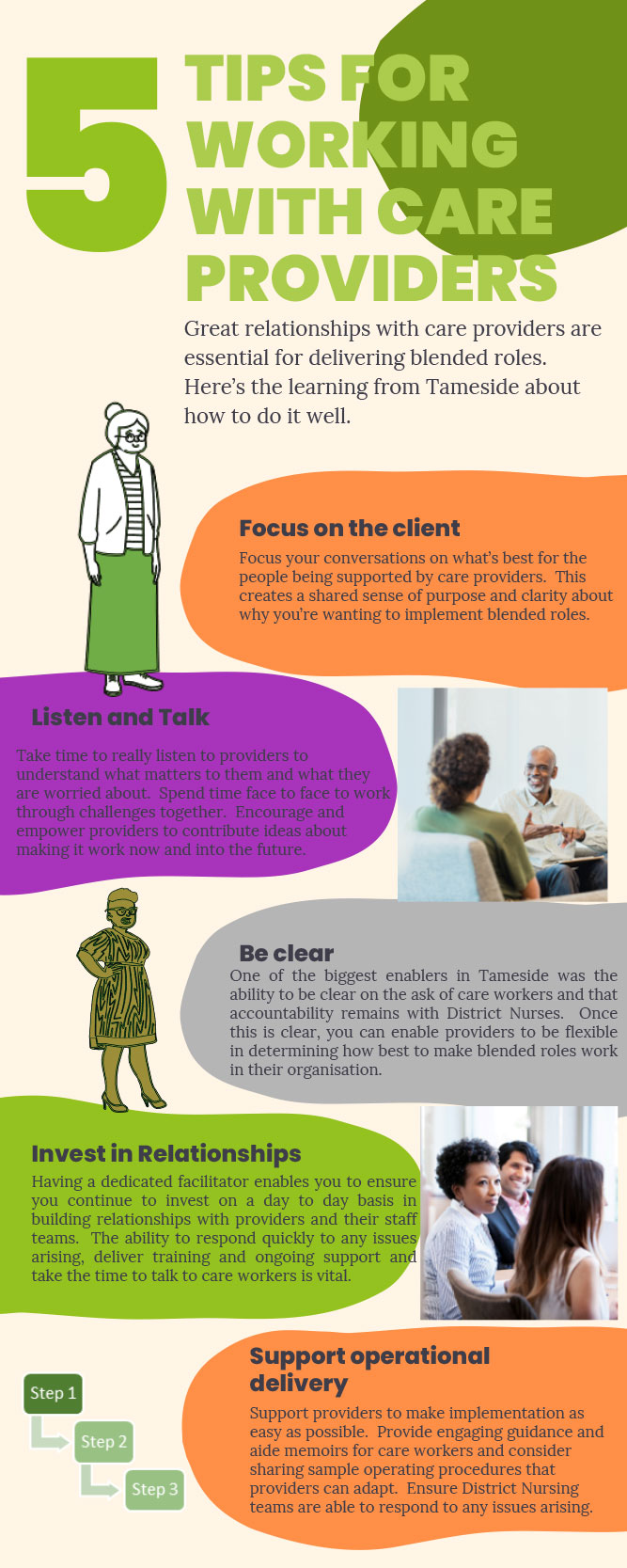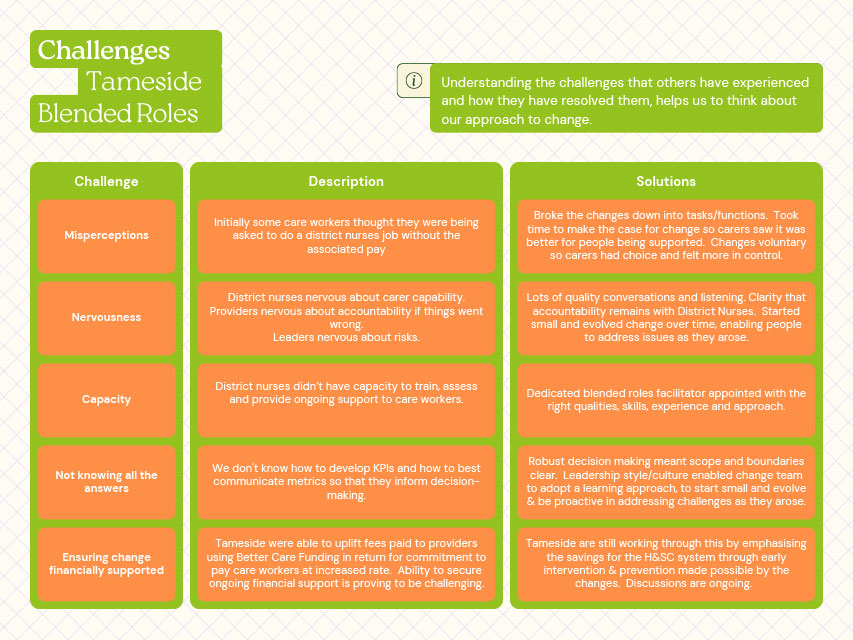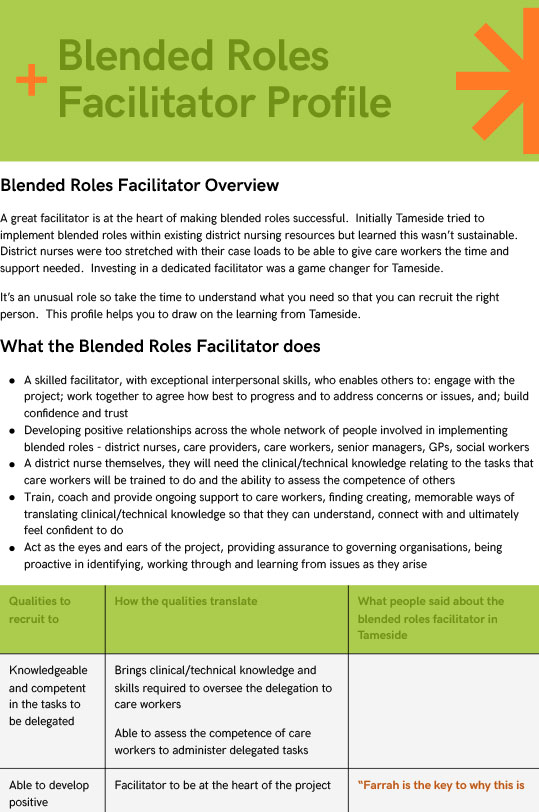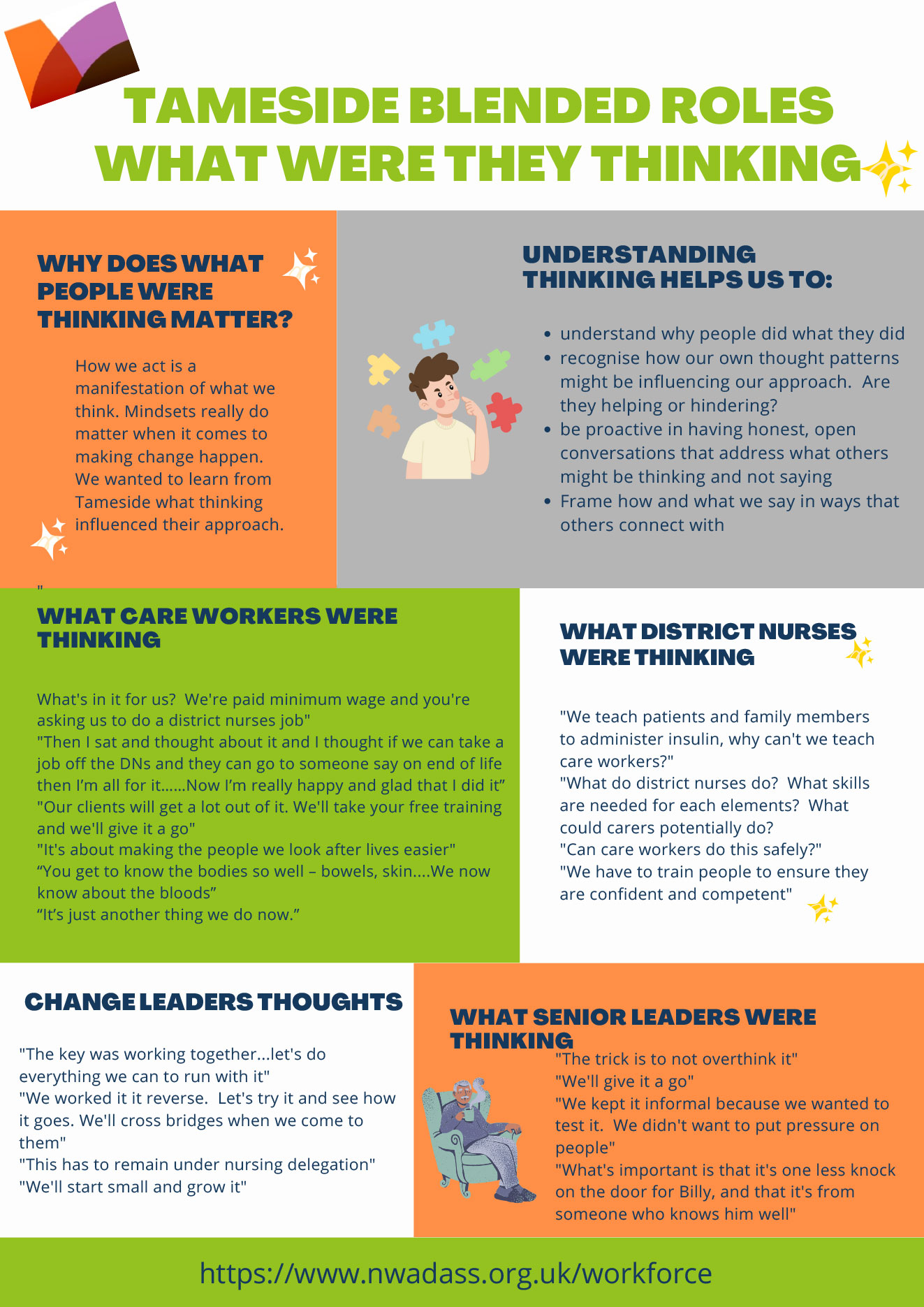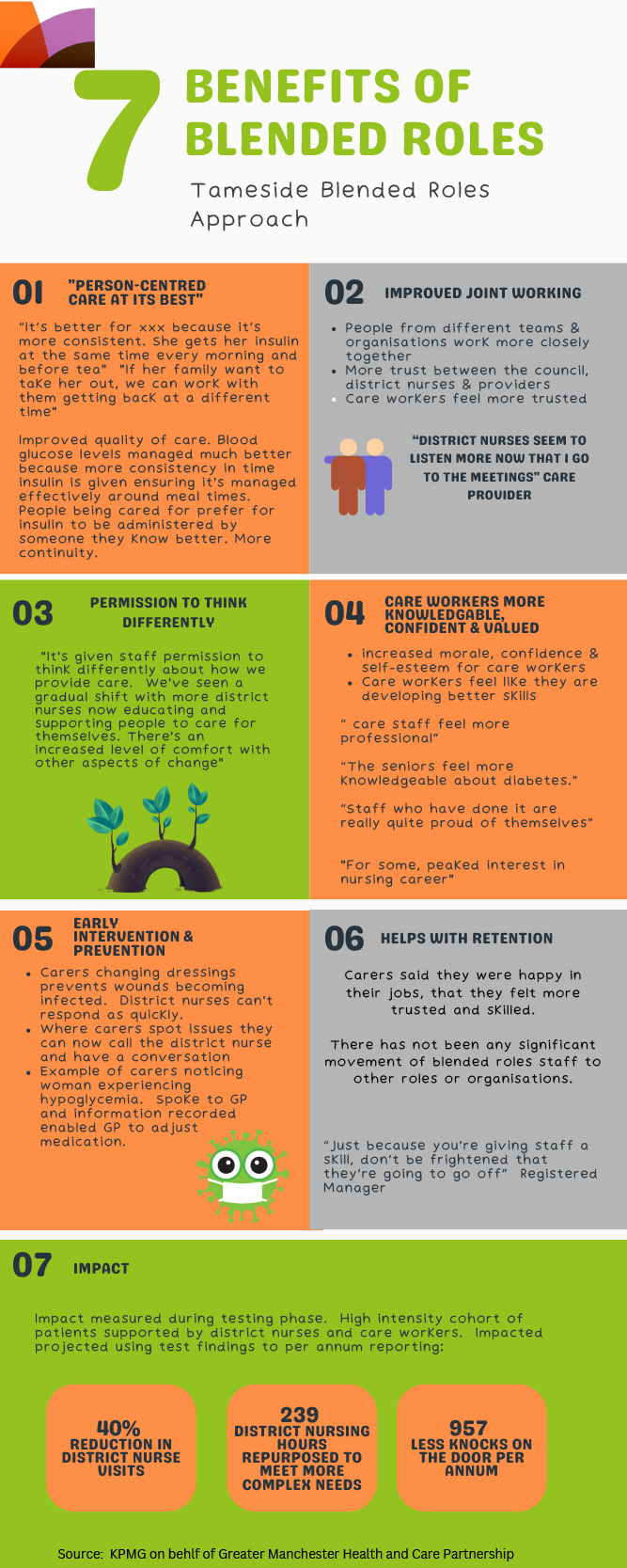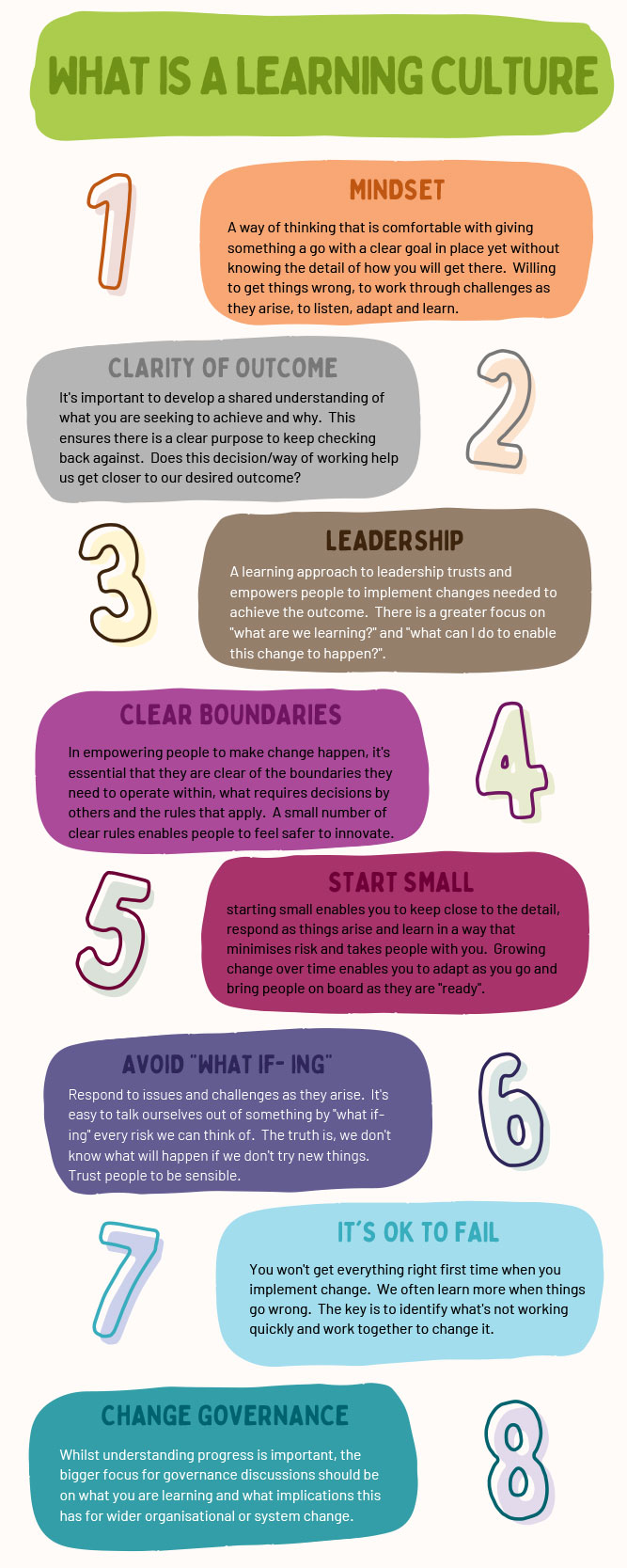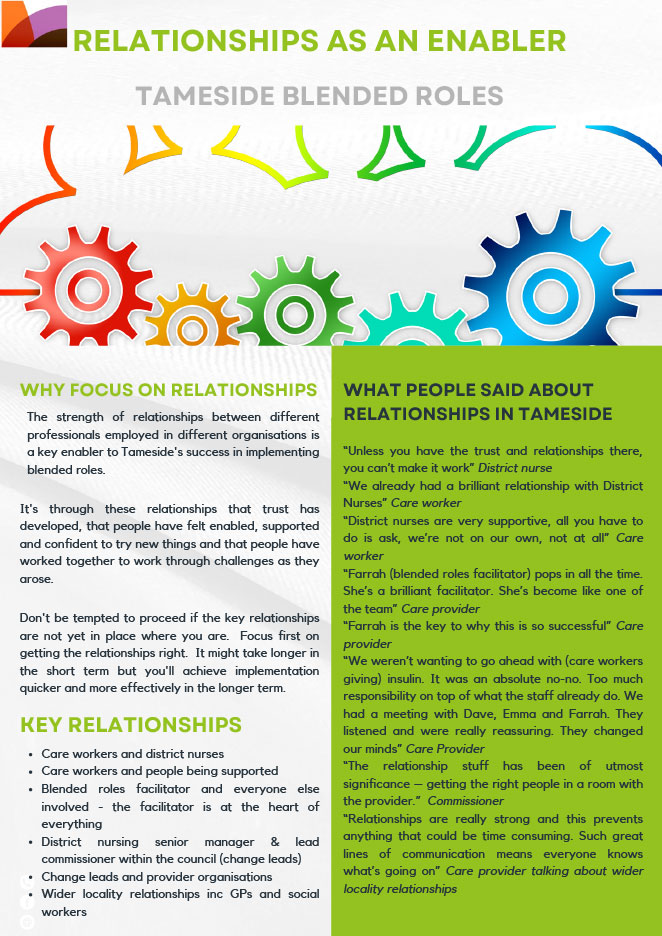Introduction
Our Future Workforce Board agreed to develop a new approach to learning and supporting change in order to explore workforce integration. In partnership with Health Education England/NHSE NW we appointed Kath Smythe to understand what drove the change behind Blended Roles in Homecare in Tameside Council.
We asked what makes for successful workforce integration? What are the important things we need to think about when we’re seeking to facilitate collaborative working across care and health staff? And why does it feel so hard to achieve at scale? At its heart, workforce integration is all about relationships: relationships within and between organisations; relationships that span professional identities; relationships that wrap around people accessing care and support. Whilst systems and processes play a role in enabling people to work more effectively together, we can’t mandate human relationships. We want to dig under the surface of examples where we see true integration happening to understand what are the things making the biggest difference.
These resources are our “Blueprint” for developing Blended Roles. These documents capture the learning, ideas, understanding, insights, capabilities and methodologies that we learned about through our exploration to help other systems achieve workforce integration more quickly and more efficiently.

